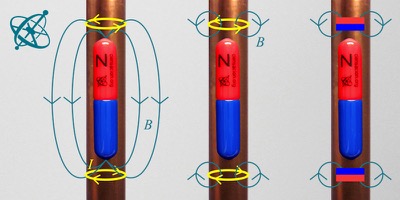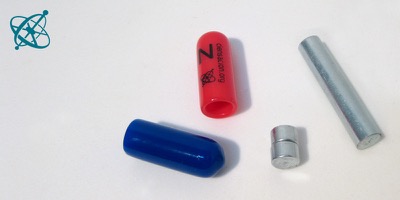 www.sciensation.org | Ciênsação hands-on experiments are published as Open Educational resources under a Creative Commons Attribution-ShareAlike 4.0 International License.
www.sciensation.org | Ciênsação hands-on experiments are published as Open Educational resources under a Creative Commons Attribution-ShareAlike 4.0 International License.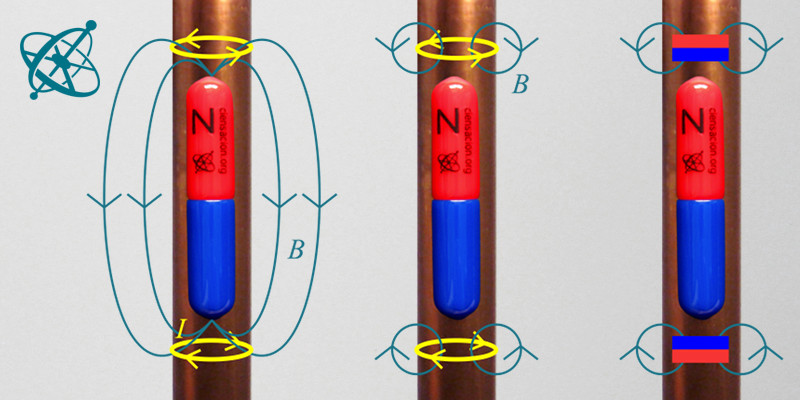
Eddy currents slowdown a magnet's fall inside a copper tube
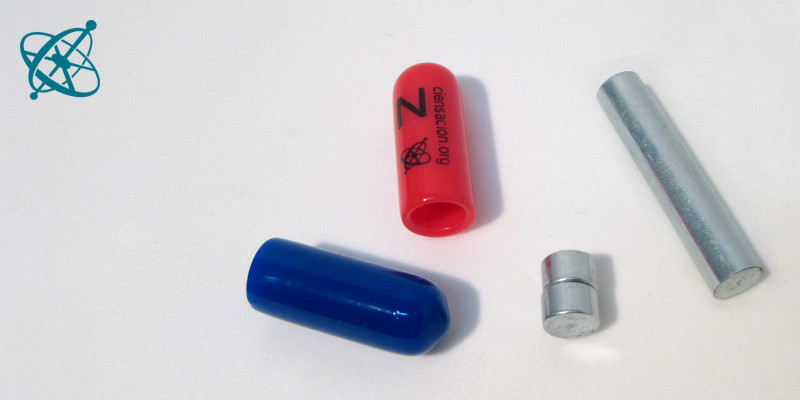
Carefully disassemble a magnet, but DON'T let the neodymium cylinders snap!

Drop the steel cylinder in a copper tube…
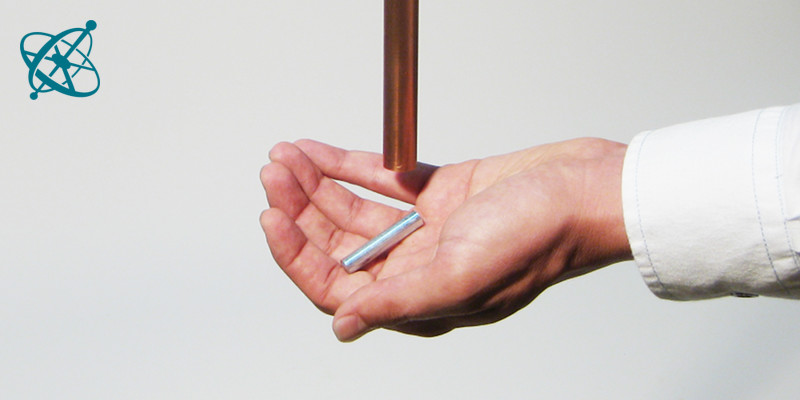
…and observe how fast the cylinder falls.

Then do the same with the rare Earth magnets…
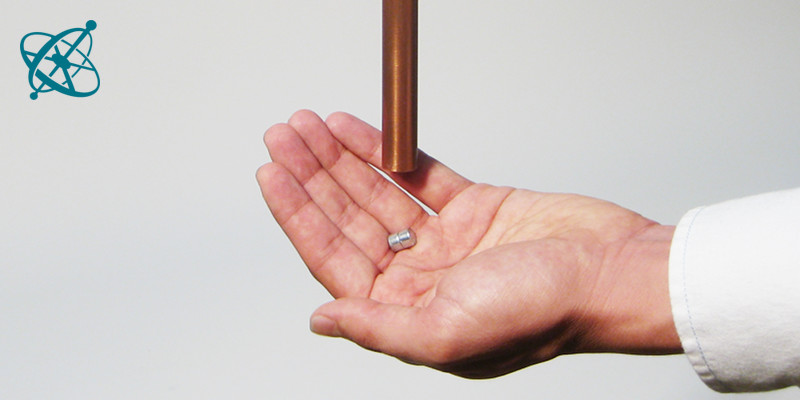
…which will take their time to fall.
Eddy currents
Eddy currents are often demonstrated by slowing the movement of a metallic pendulum when passing a magnetic field. In case you have enough time to experiment with different materials, a pendulum is a good choice, because it lets you compare the time it takes to stop the motion. However, if you have less time and want your students to conduct the experiment themselves, it is better to invert the relative motion and let a stationary metal tube slow down the fall of a magnet: this way you only have to hand around copper tubes and magnets.
Changing magnetic fields induce electric currents in conductors.
A magnet moving relative to a conductor can induce closed loops of electric current. These currents, in turn, generate an opposing magnetic field which slows down the movement.
You can use special rare-Earth magnets or adapt the Ciênsação magnet by combining the two neodymium magnets under the plastic covers: Slowly and CAREFULLY put the two neodymium magnets together (DANGER! These magnets are very strong and their material brittle. NEVER let them snap together: it may break them and splints accelerated by the collision could hurt someone).
First, drop the steel cylinder through a vertical copper tube, then repeat this with a strong magnet. Make sure that the magnet does not hit a hard ground or snap to a ferromagnetic object!
1. How do you explain the difference in fall velocity?
Touch the tube with the magnets: Do they attract each other?
› No, copper is diamagnetic, not ferromagnetic.
While the magnet falls through the tube, does the changing magnetic field affect the free electrons in the copper?
› Yes, they experience a vertical Lorentz force, making them whirl in the copper tube.
Do these circular moving electrons generate a magnetic field of their own?
› Yes, and it is opposed to the field of the falling magnet.
The magnets take longer to fall through the tube than the steel cylinder. While copper is not ferromagnetic, it is a very good conductor for electric currents. The falling magnets induce such an electric current (so-called Eddy current) which flows circular around the pipe and generates itself a toroidal, i.e. donut shaped, magnetic field. The magnetic field generated by the Eddy currents below and above the falling magnets oppose the magnetic field of the magnet, leading to a repelling force below the magnet and an attractive force above it, which together slow down the free fall.
